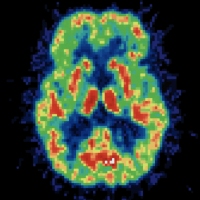 ‘Internal voice’ or verbal stream of consciousness refers to the semi-constant internal monologue one has with oneself at a conscious or semi-conscious level. Listening to your ‘internal voice’ and judgments of yourself is the first step to changing your self-image and esteem. Being aware of self-criticisms or lack of criticisms can help you determine your current self-image and decide if it needs to be improved and how. Your ‘internal voice’ can be too critical and harsh, leading to low self-esteem, in some people. In others, it may be so weak that they don’t notice when they are mean or insensitive to others.
‘Internal voice’ or verbal stream of consciousness refers to the semi-constant internal monologue one has with oneself at a conscious or semi-conscious level. Listening to your ‘internal voice’ and judgments of yourself is the first step to changing your self-image and esteem. Being aware of self-criticisms or lack of criticisms can help you determine your current self-image and decide if it needs to be improved and how. Your ‘internal voice’ can be too critical and harsh, leading to low self-esteem, in some people. In others, it may be so weak that they don’t notice when they are mean or insensitive to others.
The Researchers have demonstrated a striking method to reconstruct words, based on the brain waves of patients thinking of those words. The technique reported in PLoS Biology relies on gathering electrical signals directly from patients’ brains.
Based on signals from listening patients, a computer model was used to reconstruct the sounds of words that patients were thinking of. A technique called functional magnetic resonance imaging to track blood flow in the brain has shown promise for identifying which words or ideas someone may be thinking about.
By studying patterns of blood flow related to particular images, Jack Gallant’s group at the University of California Berkeley showed in September that patterns can be used to guess images being thought of – recreating “movies in the mind”.
All in the mind
Now, Brian Pasley of the University of California, Berkeley and a team of colleagues have taken that “stimulus reconstruction” work one step further. The team focused on an area of the brain called the superior temporal gyrus, or STG. This broad region is not just part of the hearing apparatus but one of the “higher-order” brain regions that help us make linguistic sense of the sounds we hear.
The team monitored the STG brain waves of 15 patients who were undergoing surgery for epilepsy or tumours, while playing audio of a number of different speakers reciting words and sentences.
The trick is disentangling the chaos of electrical signals that the audio brought about in the patients’ STG regions. The team employed a computer model that helped map out which parts of the brain were firing at what rate, when different frequencies of sound were played.
With the help of that model, when patients were presented with words to think about, the team was able to guess which word the participants had chosen. They were even able to reconstruct some of the words, turning the brain waves they saw back into sound on the basis of what the computer model suggested those waves meant.
From a prosthetic view, people who have speech disorders… could possibly have a prosthetic device when they can’t speak but they can imagine what they want to say. The benefits of such devices could be transformative.

Your article helped me a lot, is there any more related content? Thanks!